

— Blogs —
—Products—
 Consumer hotline +8618073152920
Consumer hotline +8618073152920 WhatsApp:+8615367865107
Address:Room 102, District D, Houhu Industrial Park, Yuelu District, Changsha City, Hunan Province, China
Product knowledge
Time:2022-09-14 21:40:35 Popularity:1371
The wind speed sensor is a common sensor that can continuously measure the wind speed and air volume (air volume = wind speed x cross-sectional area).
Wind speed sensors are generally divided into mechanical (mainly propeller, wind cup) wind speed sensors, hot air wind speed sensors, pitot tube wind speed sensors and ultrasonic wind speed sensors based on acoustic principles.
The wind cup wind speed sensor is a very common wind speed sensor, which was first invented by Robinson in the United Kingdom. The induction part is composed of three or four conical or hemispherical empty cups. The hollow cup shell is fixed on a three-pointed star-shaped bracket that is 120° to each other or a cross-shaped bracket that is 90° to each other. The concave surface of the cup is arranged in one direction, and the entire cross arm is fixed on a vertical rotation axis.
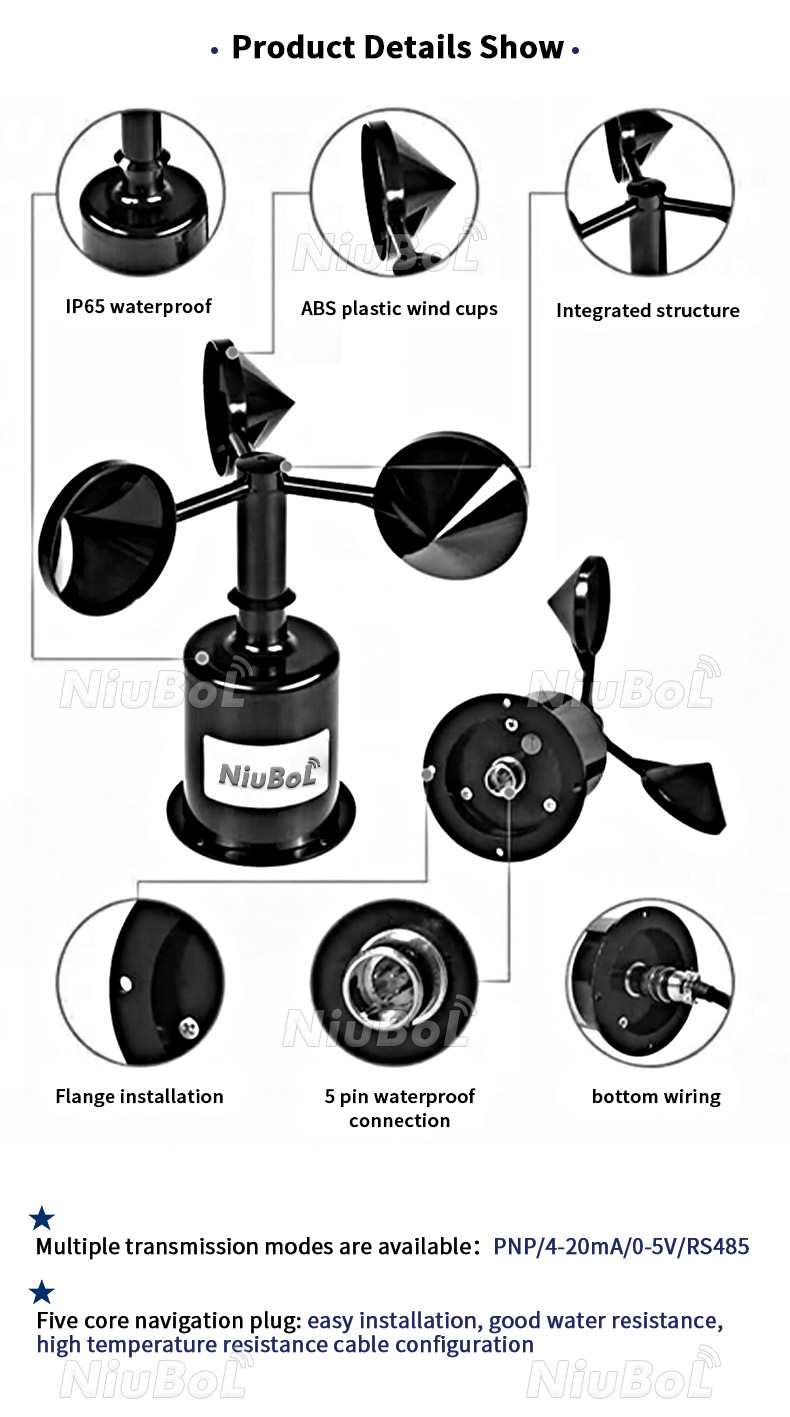
When the wind blows from the left, the wind cup 1 is parallel to the wind direction, and the component force of the pressure of the wind on the wind cup 1 in the direction closest to the wind cup axis is approximately zero. Wind cups 2 and 3 intersect with the same wind direction at a 60-degree angle. For wind cup 2, its concave surface faces the wind and bears the largest wind pressure; wind cup 3 has its convex surface facing the wind, and the wind turbulence makes it subject to wind pressure. It is smaller than the wind cup 2. Due to the pressure difference between the wind cup 2 and the wind cup 3 in the direction perpendicular to the wind cup axis, the wind cup starts to rotate clockwise. The greater the wind speed, the greater the initial pressure difference, resulting in The greater the acceleration, the faster the wind cup turns.
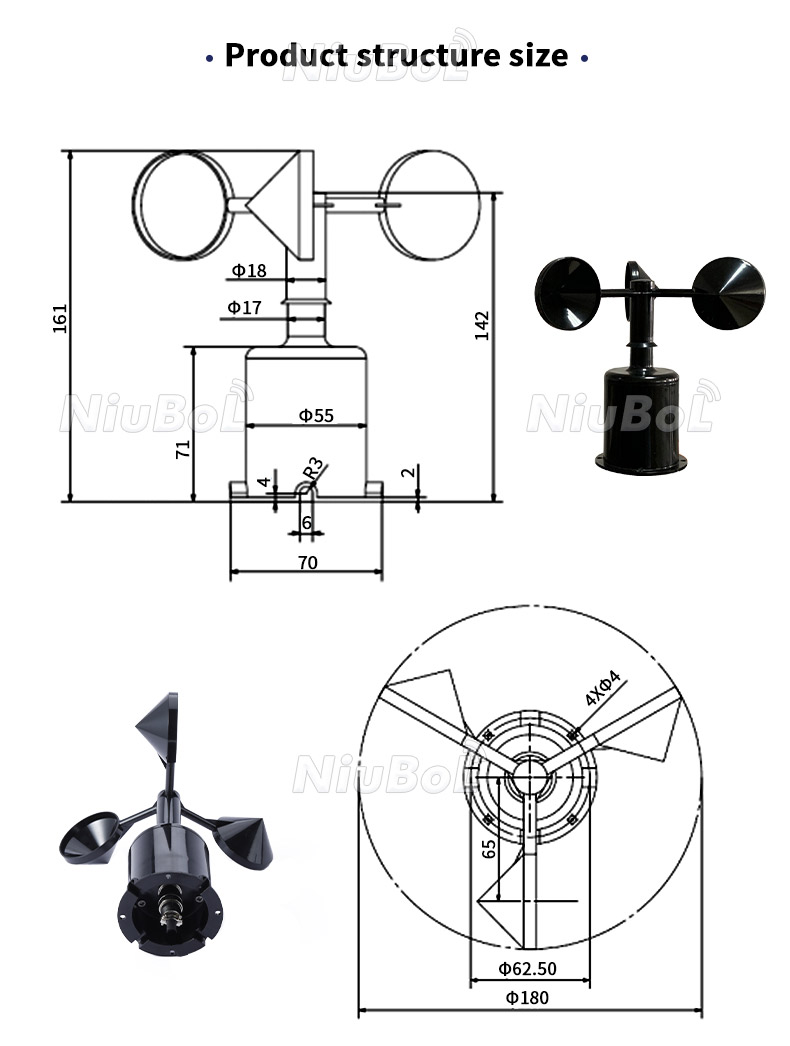
After the wind cup starts to rotate, because the cup 2 rotates in the direction of the wind, the pressure of the wind is relatively reduced, while the cup 3 rotates against the wind at the same speed, the wind pressure is relatively increased, and the wind pressure difference continues to decrease. , after a period of time (when the wind speed is constant), when the partial pressure difference acting on the three wind cups is zero, the wind cups become uniform rotation. In this way, the wind speed can be determined according to the rotation speed of the wind cup (the number of revolutions per second).
When the wind cup rotates, it drives the coaxial multi-tooth cutting disc or magnetic rod to rotate, and the pulse signal proportional to the rotation speed of the wind cup is obtained through the circuit. The pulse signal is counted by the counter, and the actual wind speed value can be obtained after conversion.
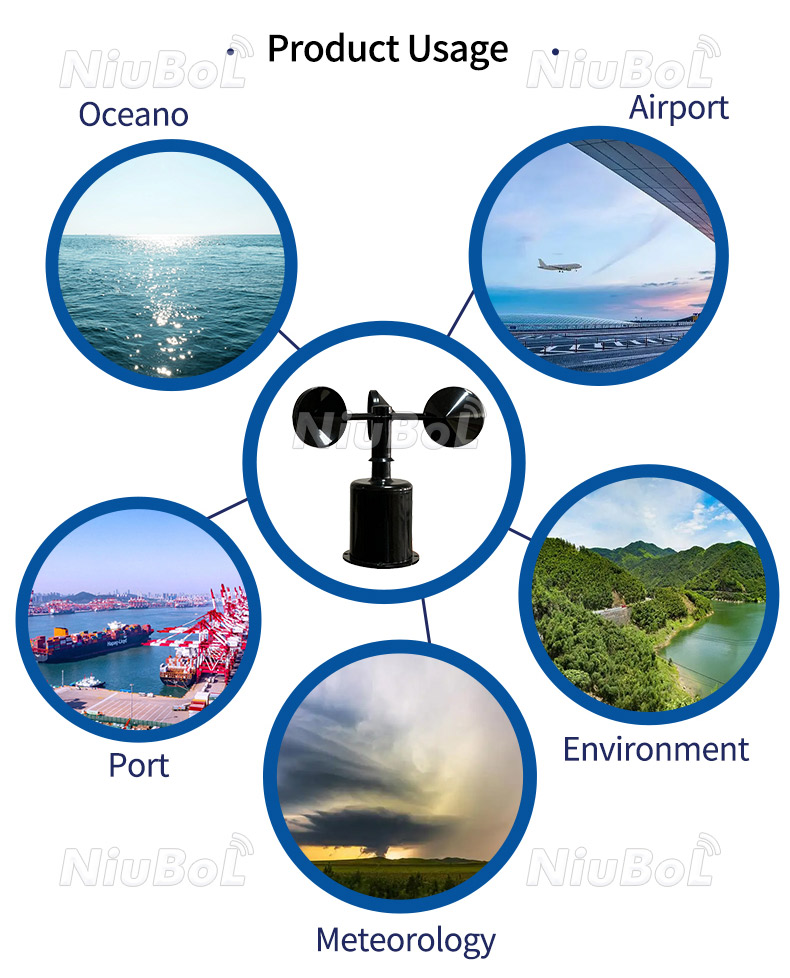
At present, the new rotor anemometers all use three cups, and the performance of the conical cup is better than that of the hemispherical cup. When the wind speed increases, the rotor can rapidly increase the rotation speed to adapt to the airflow speed. When the wind speed decreases, due to the influence of inertia, the rotation speed The wind speed indicated by the rotary anemometer in the gust is generally too high, which becomes the over-effect (the average error produced is about 10%).
Sensors & Weather Stations Catalog
Agriculture Sensors and Weather Stations Catalog-NiuBoL.pdf
Weather Stations Catalog-NiuBoL.pdf
Related recommendations
Related products
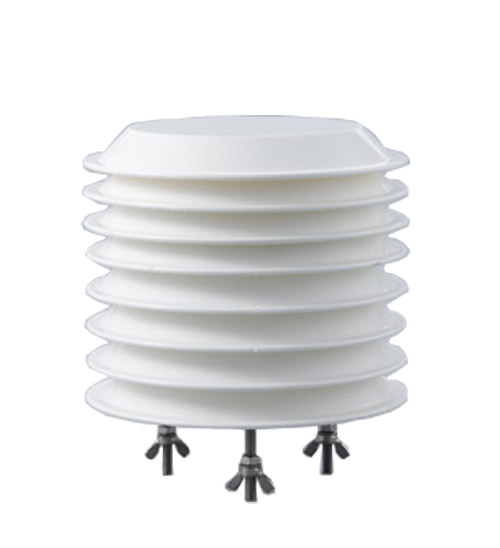 Atmospheric Temperature Humidity Pr···
Atmospheric Temperature Humidity Pr···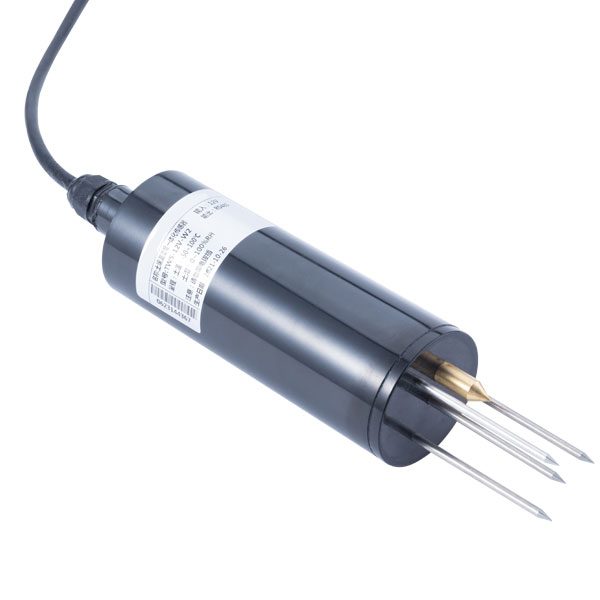 Soil Temperature Moisture Sensor 4-···
Soil Temperature Moisture Sensor 4-··· Air temperature, humidity and atmos···
Air temperature, humidity and atmos···
Screenshot, WhatsApp to identify the QR code
WhatsApp number:+8615367865107
(Click on WhatsApp to copy and add friends)